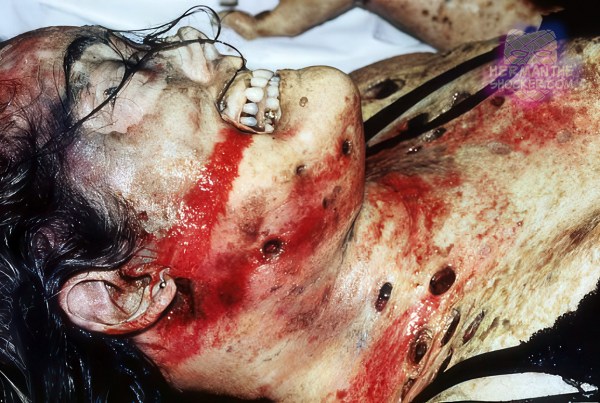Contact-range discharge to the left side of the neck (12 G shotgun, homicide). (left image) Exit site on the right lateral neck. (right image) Entrance wound with longitudinal splitting laceration toward the angle of jaw and soot staining in the depth.
Smooth-bore firearms or shotguns have a completely different profile of injuries as compared to rifled firearms. This difference is determined primarily by the type of projectiles in the shotgun. Shotgun cartridges consist of multiple projectiles that disperse a short distance from the muzzle, leading to more extensive damage. The penetrating power of each projectile is, however, reduced.
Shotguns, in general, also propel the flame for a distance of 15 cm, smoke and gas for 30 cm, unburnt particles, and metal scraps for 60 cm. The contact injuries appear similar to a rifled firearm, in both pressed and loose, as well as with underlying bone and soft tissue. In pressed or firm contact injuries, the skin may present with a double muzzle imprint from the double barrels.
Latest posts








